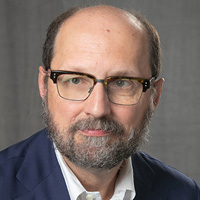The Disturbing Conflicts of Interest in Target Date Funds
Are you one of the 40 million folks who has a target date fund in your 401(k)? It could be costing you 21% in returns over the course of your career, according to a study by three professors from INSEAD, Villanova University and Michigan State.

The Pension Protection Act of 2006 single-handedly created target date funds as a global asset class, one which now commands a 20% to 25% share among public and corporate pension plans. In the United States, more than $2.5 trillion is invested in these types of funds by approximately 40 million people.
The Pension Protection Act gives legal protection to plan managers when the participants fail to make a specific choice. In that case, the employee’s contributions go to the age-based “default” option. For this reason, many investors in retirement accounts end up holding these target date funds (TDFs) without paying attention to the direct and indirect costs associated with them. This results in a cumulative return loss of 21% for an average investor holding the fund for 50 years, according to our study, “The Unintended Consequences of Investing for the Long Run: Evidence from Target Date Funds.”
A ‘Set It and Forget It’ Portfolio Creates a Lack of Accountability
Thanks to the Pension Protection Act, target date funds have become the most popular default option, and their main feature is that they provide long-term portfolio allocation for unsophisticated and inattentive investors. As the investor ages, their investments are automatically adjusted from riskier equities toward safer bonds. This takes the form of automatic rebalancing (the “glide path”) with a controlled level of risk that theoretically would not require frequent monitoring by investors. Target date funds do everything that designers of pension plans promised 15 years ago: age-appropriate portfolios with a controlled level of risk that do not require daily monitoring.
From just $107.88 $24.99 for Kiplinger Personal Finance
Become a smarter, better informed investor. Subscribe from just $107.88 $24.99, plus get up to 4 Special Issues

Sign up for Kiplinger’s Free Newsletters
Profit and prosper with the best of expert advice on investing, taxes, retirement, personal finance and more - straight to your e-mail.
Profit and prosper with the best of expert advice - straight to your e-mail.
But there is a problem with this “set it and forget it” mentality for investors in target date funds, particularly those with a 30- to 40-year time horizon. Early on in their investment timeline, they might be willing to tolerate short-term volatility, but it is the lack of monitoring that removes the fund management companies' incentives to provide investors with the best possible performance.
Target date funds typically do not directly invest in equity or bonds but in underlying pooled investment vehicles, such as index mutual funds, exchange-traded funds and actively managed mutual funds, and are typically chosen within the same fund family. In 2019, around 58% of the TDFs invested only in the same families' funds. Another 20% of the TDFs invested 50% to 99% of assets in the same families’ funds. Only 10.6% of the TDFs did not invest in their own family.
In our research, we found that investors do not punish the fund managers for underperformance by withdrawing their money, nor do they reward them for a good performance by investing more. Instead, funds receive a steady flow of monthly contributions, regardless of performance.
The problem caused by this lack of accountability is especially acute among relatively young investors. Indeed, a longer investment horizon reduces the incentives for younger investors to monitor their accounts — the payoff of the fund is so far in the future that it is not worth even thinking about — providing the manager with more opportunities to behave opportunistically and put the fund's management company over investors' interests.
The Other Big Problem: Higher Fees
Additionally, the problem for these default investors involves fees. Target date funds contain both direct and indirect fees (fees charged by the funds that the TDF invests into), and the transparency of indirect fees is low. Although TDFs are cheaper than actively managed equity products, the second layer of fees they come with tends to nullify that advantage. Indeed, TDF managers engage in fee-skimming by charging higher fees on the less observable, more opaque underlying funds. And the longer the horizon, the higher the total fees, according to our research.
Almost all of the effect comes from the “underlying” fees — that is, the fees charged by the underlying investment vehicles. In contrast, in the case of the directly charged fees, the time horizon plays no role. Thus TDFs are used to subsidize the underlying funds managed by the same family — in fact, in 37% of the cases, TDFs invest in more expensive classes of the funds, providing the fund family with an extra layer of fees.
More importantly, even controlling for fees, target date funds are grossly underperforming equity funds with the same risk profile. The underperformance is substantial in long-horizon funds: as high as 1.8% per annum. The effect on employee’s 401(k) and other retirement plans is significant. We estimate that, over a lifetime, such underperformance results in a 20% to 30% deficit in pension savings at the time of retirement. Such a lower performance is related to both lower return and higher risk-taking.
Our Conclusion: More Regulation Is Needed
Overall, our results suggest that target date funds require some form of regulation. Indeed, while the TDF is an essential innovation that aims to improve investors' welfare in retirement accounts, still the abuse of inattentive investors sounds more like a conflict of interest, which serves to undermine the essential benefits of investing for the long run.
A potential solution would lie in better transparency in investment policy and the risk level that target date funds take, both for short and long horizons. Within this context, the higher transparency in the rule that regulates the glide path and the degree by which the management company can change it would be a significant improvement. Also, the degree by which active funds should be part of the long-term asset allocation of target date funds is, at best, questionable. Simple use of a few ETFs or similar index products would provide cost-efficient asset allocation benefits and avoid potential conflicts of interest.
Profit and prosper with the best of Kiplinger's advice on investing, taxes, retirement, personal finance and much more. Delivered daily. Enter your email in the box and click Sign Me Up.

Andrei Simonov is Professor of Finance and Chairperson of Finance Department at Michigan State University. He received a Ph.D. in Finance from the European Institute of Business Administration (INSEAD, 2000). He also holds a Ph.D. in Theoretical Physics from Moscow State University. His research interests include asset pricing, individual portfolio decision, investment banking, mutual funds and behavioral finance.
-
 Nasdaq Sinks 418 Points as Tech Chills: Stock Market Today
Nasdaq Sinks 418 Points as Tech Chills: Stock Market TodayInvestors, traders and speculators are growing cooler to the AI revolution as winter approaches.
-
 23 Last-Minute Gifts That Still Arrive Before Christmas
23 Last-Minute Gifts That Still Arrive Before ChristmasScrambling to cross those last few names off your list? Here are 23 last-minute gifts that you can still get in time for Christmas.
-
 The Rule of Compounding: Why Time Is an Investor's Best Friend
The Rule of Compounding: Why Time Is an Investor's Best FriendDescribed as both a "miracle" and a "wonder," compound interest is simply a function of time.
-
 If You're a U.S. Retiree Living in Portugal, Your Tax Plan Needs a Post-NHR Strategy ASAP
If You're a U.S. Retiree Living in Portugal, Your Tax Plan Needs a Post-NHR Strategy ASAPWhen your 10-year Non-Habitual Resident tax break ends, you could see your tax rate soar. Take steps to plan for this change well before the NHR window closes.
-
 Your Year-End Tax and Estate Planning Review Just Got Urgent
Your Year-End Tax and Estate Planning Review Just Got UrgentChanging tax rules and falling interest rates mean financial planning is more important than ever as 2025 ends. There's still time to make these five key moves.
-
 What Makes This Business So Successful? We Find Out From the Founder's Kids
What Makes This Business So Successful? We Find Out From the Founder's KidsThe children of Morgan Clayton share how their father's wisdom, life experience and caring nature have turned their family business into a respected powerhouse.
-
 Past Performance Is Not Indicative of Your Financial Adviser's Expertise
Past Performance Is Not Indicative of Your Financial Adviser's ExpertiseMany people find a financial adviser by searching online or asking for referrals from friends or family. This can actually end up costing you big-time.
-
 I'm a Financial Planner: If You're Not Doing Roth Conversions, You Need to Read This
I'm a Financial Planner: If You're Not Doing Roth Conversions, You Need to Read ThisRoth conversions and other Roth strategies can be complex, but don't dismiss these tax planning tools outright. They could really work for you and your heirs.
-
 Could Traditional Retirement Expectations Be Killing Us? A Retirement Psychologist Makes the Case
Could Traditional Retirement Expectations Be Killing Us? A Retirement Psychologist Makes the CaseA retirement psychologist makes the case: A fulfilling retirement begins with a blueprint for living, rather than simply the accumulation of a large nest egg.
-
 I'm a Financial Adviser: This Is How You Can Adapt to Social Security Uncertainty
I'm a Financial Adviser: This Is How You Can Adapt to Social Security UncertaintyRather than letting the unknowns make you anxious, focus on building a flexible income strategy that can adapt to possible future Social Security changes.
-
 I'm a Financial Planner for Millionaires: Here's How to Give Your Kids Cash Gifts Without Triggering IRS Paperwork
I'm a Financial Planner for Millionaires: Here's How to Give Your Kids Cash Gifts Without Triggering IRS PaperworkMost people can gift large sums without paying tax or filing a return, especially by structuring gifts across two tax years or splitting gifts with a spouse.


